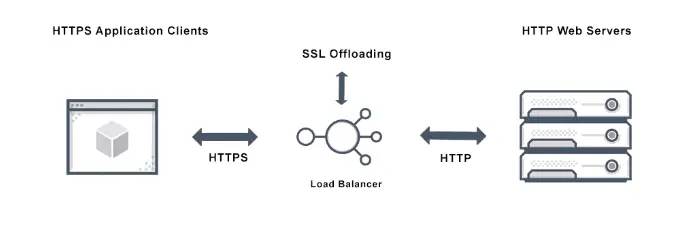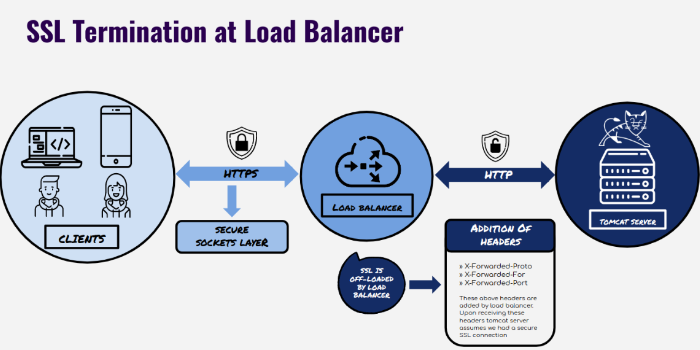SSL certificates are your best defense against man-in-the-middle attacks, cross-site scripting, etc. Every business wants a secure experience for its audience. However, companies must rethink their strategies regarding the cost and resources needed for such security. What is SSL Offloading, though? Let us introduce you to SSL Offloading.
SSL offloading removes the SSL encryption burden from a web server by transferring the processing to a separate device, relieving the server of decrypting and/or encrypting SSL traffic. It enables SSL acceleration or termination.
Selecting a cheap SSL certificate provider can be cost-effective for purchasing an SSL certificate. You can permanently save on installing different SSL certificates on each subdomain and buy wildcard SSL certificates in case you run a website with subdomains. In other cases, you can choose another type of SSL cert. So, let us first start with the definition! Also, click here for Localized Domains and when to use them.
Table of Contents
Definition
SSL offloading is a process that reduces the burden of encryption-decryption of SSL attached to the incoming web traffic from the web server. Unfortunately, the Security Socket Layer (SSL) adds an extra load on the web servers due to several roundtrips for the SSL/TLS handshake. However, with TLS 1.3, roundtrips for a handshake were minimized. Yet, SSL/TLS can add to the latency with higher incoming traffic.

A simple solution to such an extra burden is load balancing. You can offset this additional burden by spinning up separate Application-Specific Integrated Circuit (ASIC) processors. In lay terms, it is an approach where an independent resource is spun up for running SSL /TSL handshake and encryption/decryption. Read this article for the ten best 3Ds emulators for iOS.
Now that you know the definition of SSL offloading, here is how it works.
See Also: 7 Best Free Baby Monitor Apps For Android: Updated List
How Does SSL Offloading Work?
There are two ways to offload SSL,
- SL Termination
- SSL Bridging
SSL Termination is a straightforward process. First, a proxy or load balancer exists between the client and server. Then, when a client tries to connect with the web server, the connection is made to an SSL Terminator. This connection is HTTPS. On the other hand, the relationship between SSL Terminator and the server is HTTP.
Here, a client will have a secure connection with SSL Terminator. However, the HTTP connection works behind the scenes, secured through firewalls. SSL bridging has a similar concept, but instead of an HTTP connection, it encrypts the incoming traffic again. So, SSL bridging can be termed a double encryption approach.
When a client connects with the server, it gets connected to the SSL bridge. Next, the SSL bridge decrypts the incoming traffic and re-encrypts it before sending it to the web server.
It is important to note that the SSL bridging process is helpful when dealing with security concerns over unencrypted incoming traffic. So, the output of SSL offloading is less in the bridging approach than in SSL Termination.
See Also: Everything You Need To Know About Quantum Financial System
See Also: 8 Essential Networking Books In 2024
How To Configure SSL Offloading?
SSL offloading needs to terminate HTTPS traffic, decryption of SSL records, and forward HTTP traffic toward the webserver. Incoming HTTP traffic you offload to the backend server is always susceptible to cyber-attacks. So, it becomes vital to configure the SSL offloading for better security.
You can achieve end-to-end security for your SSL offloading by re-encrypting the HTTP. This approach is SSL bridging, but it may not be effective without proper configurations. Configuring the SSL offloading will securely help your SSL sessions communicate with the web server.

This approach involves the configuration of the backend SSL transactions. With proper SSL offloading and the correct configuration, you can save on resources with cost reduction.
It enables a way around security key exchange or SSL handshake. So, you can improve the security and reduce resource costs simultaneously through SSL offloading configuration.
Here are the steps to configure SSL offloading,
Create an SSL service. Create a virtual server. Add a security key-pair. Bind the certificate key pair with the virtual server. Attach the services to the virtual server.
Here virtual server will work as a load balancer to offload the SSL/TLS handshake. The concept of load balancing is not new, but SSL/TLS offloading requirements differ. Also, learn the best Cloud gaming services.
See Also: How To Add Bots To Discord Server | Best Ways [2024]
What Is SSL Offloading In A Load Balancer?
Over the years, load balancing has evolved, and several tools have been generated. One straightforward way of load balancing is to create a virtual server. However, if you plan to use cloud services like AWS, Google Cloud Platform, or Microsoft Azure, they have load-balancing features and tools.
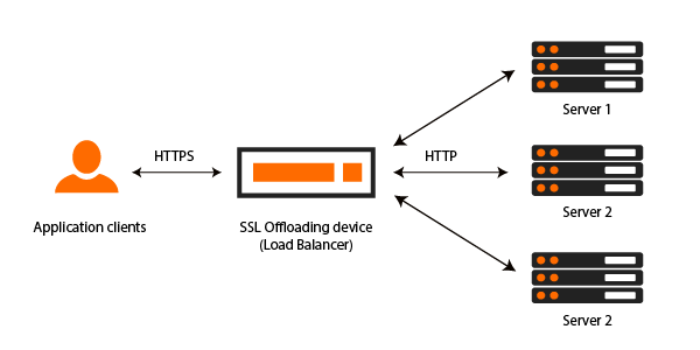 For example, you can use AWS Application Load Balancing (ALB) for SSL offloading:
For example, you can use AWS Application Load Balancing (ALB) for SSL offloading:
- It would be best to create a web server in a public subnet.
- AWS allows you to generate certificates through an in-built feature or find a low-cost or cheap SSL certificate provider to buy one.
- You will need to create another public subnet in a separate availability zone.
You can use the AWS console to access the load balancer option easily. Further, enter a logical name and change the traffic receiver from HTTP to HTTPS. Then, add details of availability zones subnets and SSL certificates.
After adding these details, you will have to name the security group. Next, you must port the HTTP traffic through a separate security group. So, you have changed the HTTP traffic to HTTPS received by the server. Next, add the webserver details and click on Create. Finally, your ALB is ready for the AWS EC2 account.
It is essential to note that AWS ALB is not free, and you must consider pricing before going for it. While this is an excellent option for SSL offloading on websites hosted on AWS cloud services, Google Cloud Platform provides a Cloud Load Balancing tool. Apart from the cloud load balancing tools, many tools are available, like,
- Nginx
- Citrix ADC
- Kemp Loadmaster
- Incapsula
- JetNEXUS Load Balancer
See Also: Best Hacking Tools For Windows OS | Top 14 Tools
SSL Offloading Advantages:
Consider all the computations needed to encrypt data. CPU-intensive operations include encryption. It implies that any computer using encryption could bog down.
Have you ever noticed how, occasionally, your laptop’s or smartphone’s browser significantly lags while you conduct business online? It is due to SSL’s increased workload. Let’s examine a few significant advantages of SSL offloading.
- It enhances the time it requires for the page to load.
- Increased speed from the web server.
- It improved web server efficiency.
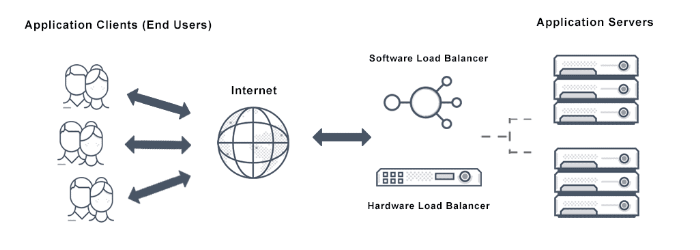
- Increase the website’s stability.
- Adjusting the web servers automatically during times of high demand.
- Utilize as a load balancer when using various servers to deliver web traffic.
Any website owner who manages a considerable amount of encrypted data should consider using SSL offloading. It is a method for clearing web servers so they can concentrate on their primary duties.
SSL acceleration is one method for dealing with SSL offloading. This approach processes encryption using application-specific integrated circuits (ASIC). These are unique, specialized pieces of hardware that you can utilize to lessen the strain on onboard CPUs.
SSL Offloading Types:
The major types of SSL offloading are two.
SSL Bridging
SSL bridging intends to run additional security measures on the data to ensure no malware is present. The steps are decrypting the incoming data, checking the data for any malicious code, and afterward re-encrypting it before sending it to the web server.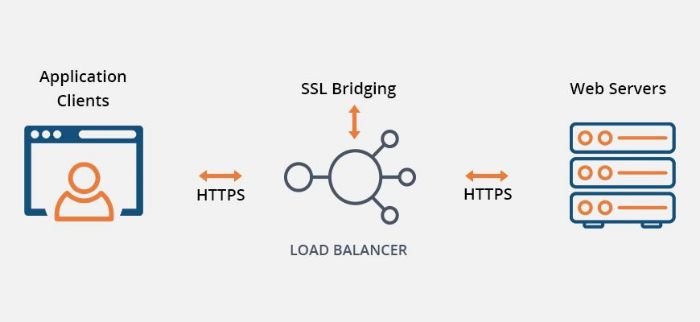 This offloading is intended to improve security rather than free the web server from processing duties.
This offloading is intended to improve security rather than free the web server from processing duties.
See Also: Plex On LG TV: A Step-By-Step Guide To Your Own Media Server
SSL Termination
SSL termination is a relatively straightforward operation. Data must first pass through a device to encrypt or decrypt data based on which direction it is flowing.
For example, any encrypted data directed toward the web server is decrypted at this device before being forwarded to the web server. It is the quickest and most effective kind of unloading.
Advantages Of SSL Termination:
- Through a load balancer, the incoming data is encrypted and decrypted. Thus, there is no workload on the server.

- Websites that don’t handle sensitive consumer data should employ SSL termination (username, password, bank details).
- It aids in increasing the server’s speed.
Disadvantages Of SSL Termination:
- Since sensitive data transfers into plain text between the load balancer and the server, hackers can easily steal it. Because the data’s privacy is broken, it somewhat defeats the purpose of using an SSL certificate.

- Vulnerabilities may arise when the server gives the load balancer access to its keys.
- The clients are misled into believing that their data is secure all across the communication, even when encryption is lost in the middle, and they are unaware of it.
- It isn’t easy to be confident that all the data is still secure because the load balancer manages it.
See Also: How To Hire Java Developer
How Can I Keep Everything Secure?
Teach your team members to distinguish between harmless and possibly sensitive information.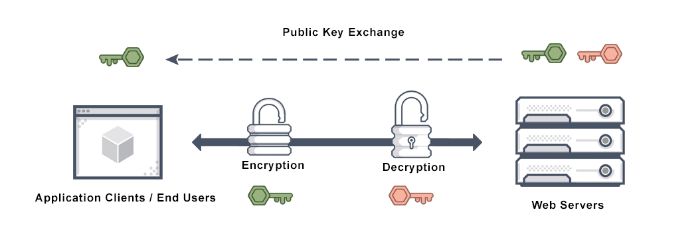
Know the distinctions between public and private wireless networks. If they must communicate information over a public network, encrypt your data with a VPN program.
FAQS
Why do we need SSL offloading?
SSL offloading maintains web server performance by remotely managing encryption and decryption processes. It aims to reduce web server stress by externally handling encryption tasks. This strategic approach optimizes the allocation of resources, leading to enhanced overall system efficiency and scalability. Consequently, user experiences benefit from improved performance and responsiveness, as the primary server is relieved of the encryption load.
Where do I offload SSL?
SSL offloading is efficiently executed by a dedicated device known as a load balancer. Apart from bolstering security and optimizing performance, this device serves as an intermediary between the browser and the server. Furthermore, it effectively manages the crucial tasks of encryption and decryption, ensuring smooth and secure data transmission.
What do you mean by SSL offloading?
SSL offloading involves the removal of SSL-based encryption from incoming traffic, effectively reducing the web server's load in decrypting and encrypting data transmitted via SSL. This responsibility is transferred to a dedicated device designed specifically for SSL acceleration or termination. This not only streamlines the process but also contributes to improved overall performance and efficiency of the system.
What happens if I turn off SSL?
Disabling SSL exposes the system to security risks, making it susceptible to attacks by malicious network users. To enhance security and ward off potential threats, you can either generate a self-issued certificate identifying the host by its network name or acquire a certificate endorsed by a trusted certificate authority (CA) to establish secure connections.
Conclusion
SSL offloading can be helpful when the primary web server is not equipped to manage SSL requests or when the load on the primary web server is too high. An SSL offloader lets you ensure that all traffic passing through your server is encrypted, regardless of which site requests it.
For SSL offloading, you can use different methods and ensure cost-effective security. This can save you time and resources and help keep your website secure. It will also help your site stay faster for an enhanced user experience.

Dedicated group of Computer Engineers making tech updates accessible to all. Our dream is to simplify and share tech news with everyone.
